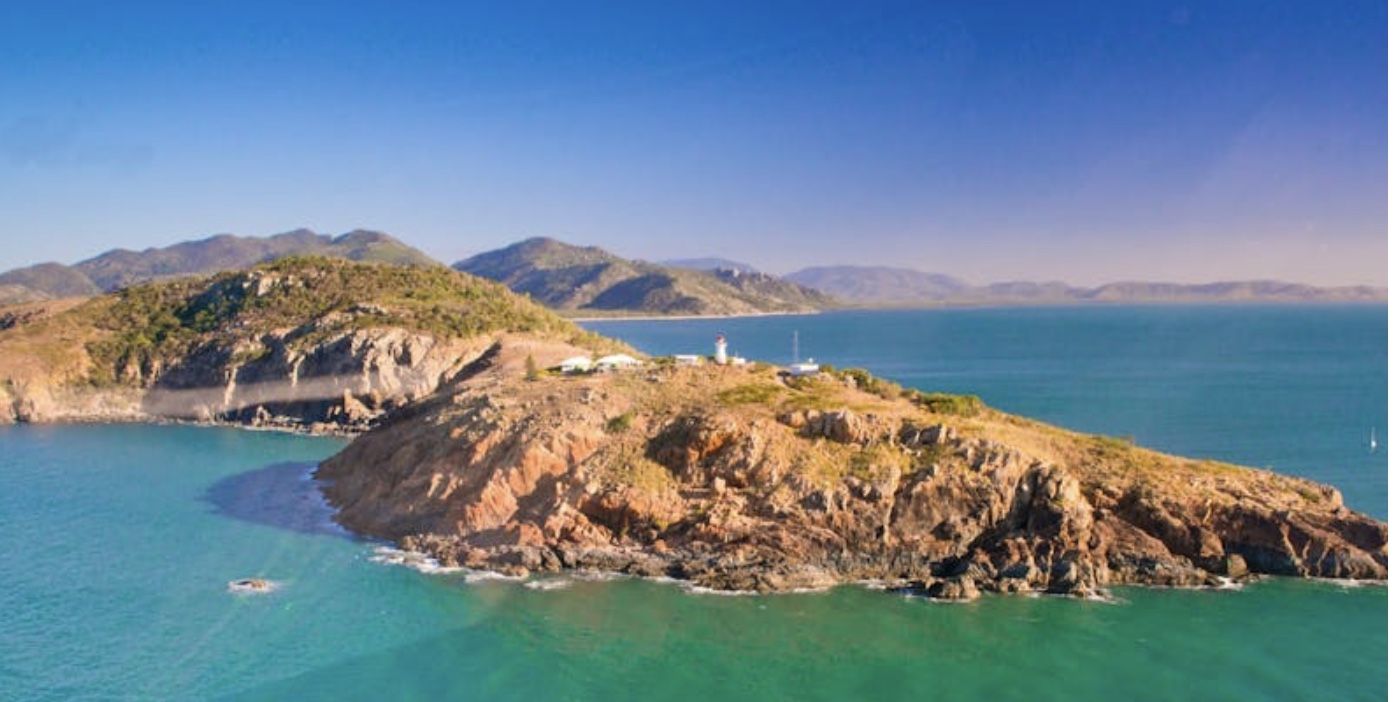
Location:
18km due east of Townsville, Far North Queensland
GPS: Lat: 19° 10′ 58.3″S : Long: 147° 00’ 55.7″ E
First Exhibited: December 1879 (Automated September 1987)
Tower height: 36′ (11m). Focal height: 210′ (64m) msl
Original Lens: 4th Order Revolving Chance Bros. Dioptric
Range: White 15nml (28km); Red 12nml (22km)
Characteristic: One white / red flash every seven and a half seconds: [Fl WR 7.5s]
History:
On the 6th of June, 1770 Captain Cook named this landmark but there is conjecture over whether he named it in honor of John Cleveland who was then Secretary to the Admiralty, or because the coast reminded him of his home county in northern England, Cleveland which loosely translates from olde English as “cliff-land”.
Cape Cleveland lighthouse (1878) was the second of three lighthouses built in the area to facilitate safe passage to and from Townsville and for ships navigating the inner passage while travelling up and down the Queensland coast. The other two were Bay Rock Lighthouse (1886), 20nml (36km) to the north off the northern tip of Magnetic Island and Cape Bowling Green (1874) 15nml (28km) to the south at the end of a long sand spit and at the entrance to Bowling Green Bay.
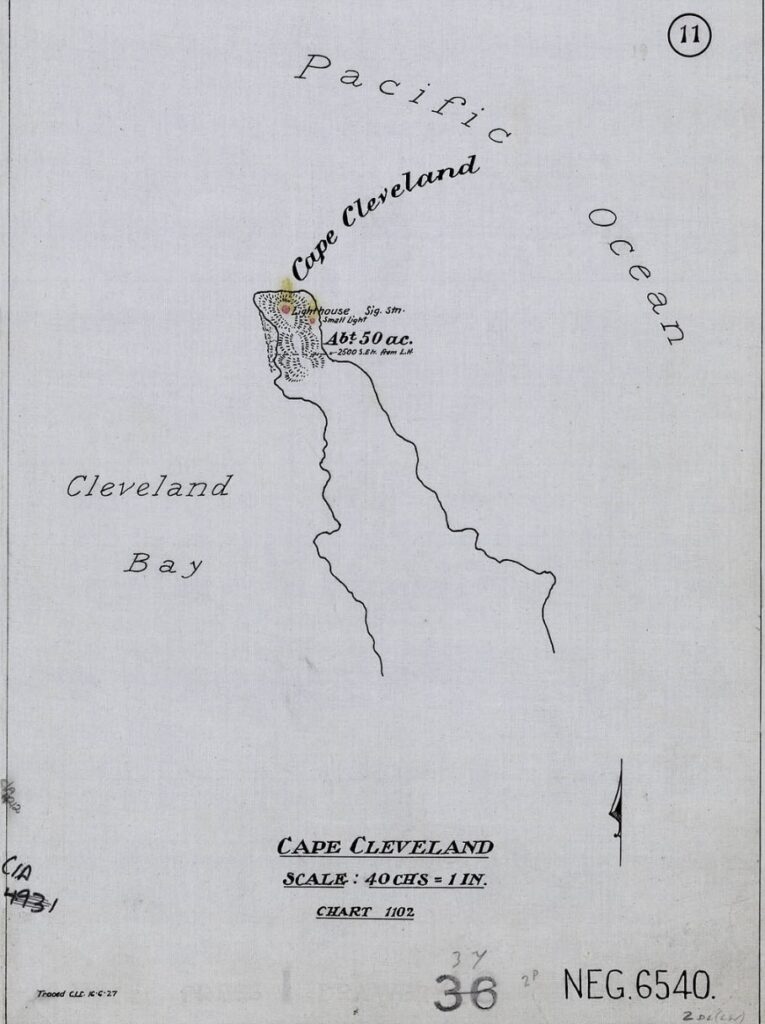


These lighthouses, and another sister lighthouse at Dent Island, 100 nml further south in the Whitsunday group were built in response to increasing coastal traffic servicing the growing number and size of towns along the Queensland coast and the increasing frequency of shipwrecks along this stretch of coast.
Of the three Cape Cleveland is the only one that is still operating in it’s original structure, Bay Rock having been decommissioned in the 1980’s and relocated to Townsville Maritime Museum in 1992, and Cape Bowling Green having been relocated twice due to coastal erosion in 1878 and again in 1908, and finally replaced by a skeletal steel tower in 1987.
Cape Cleveland was the thirteenth of a flurry of lighthouse construction along the north Queensland coast commissioned by George Heath (Chairman of the Queensland Marine Board). The majority of these lighthouses, including Cape Cleveland, were designed by F.D.G.Stanley, the Queensland Colonial Architect and W.P.Clark of Maryborough won the construction contract and was commissioned to construct this and a number of other lighthouses along the Queensland coast, however, these contracts were later transferred to Clark’s brother John and his partner James Wiseman who completed this construction.




The Lighthouse:
Cape Cleveland was the thirteenth lighthouse commissioned by the Queensland government and it was constructed using the unique Queensland method of covering a hardwood frame with galvanised iron plates imported from Britain, a technique that has stood the test of time remarkably well.
This lighthouse had two unusual features, firstly in order to guide ships through the narrow Cleveland channel it was a front and rear light and displayed two colours of light, a white light when the ship was on course and a red light when it needed to adjust course to port or starboard. This feature was achieved through an ingenious arrangement of lenses and a clockwork mechanism, which due to the towers relatively short stature required winding every 75 minutes – an onerous task for the resident light keepers!
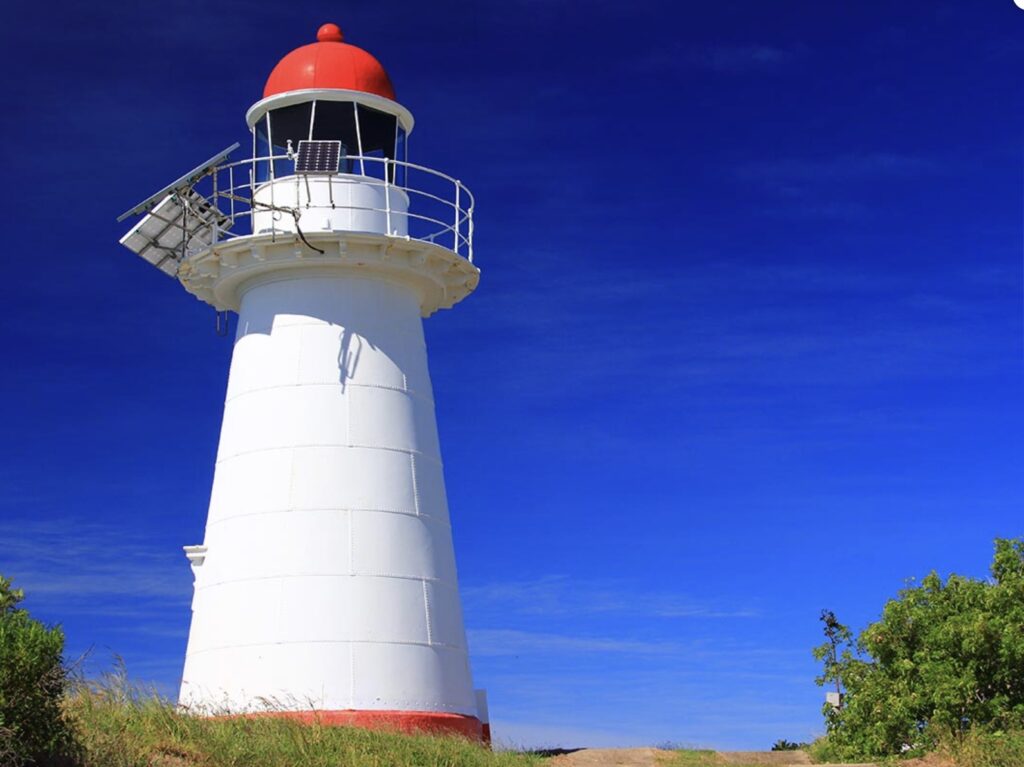

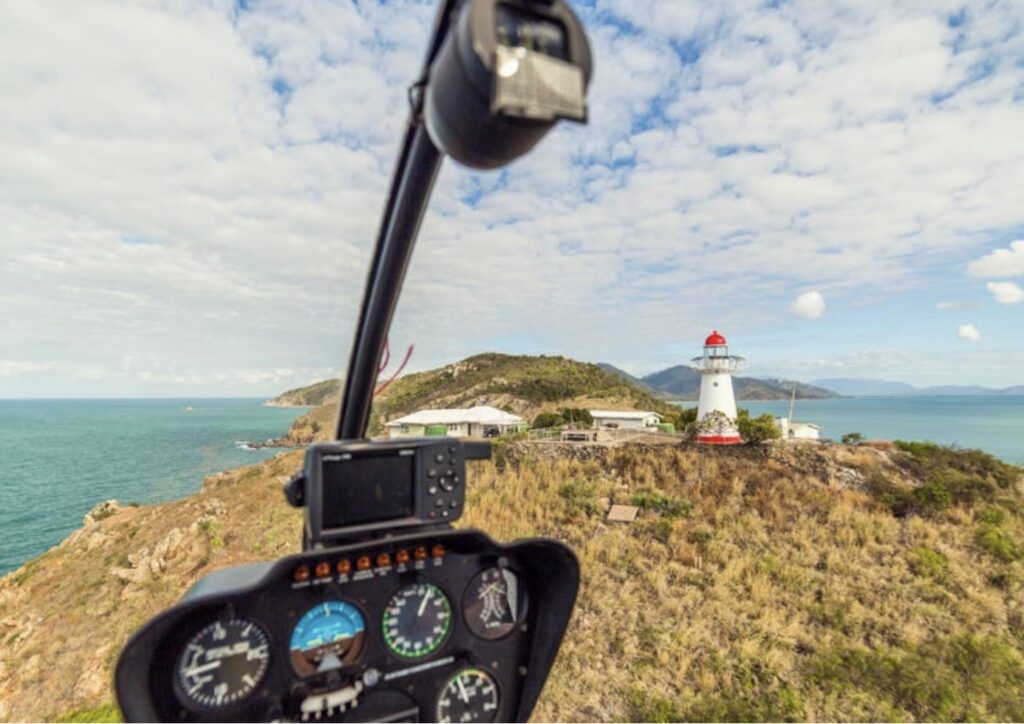
Another interesting feature of this installation was that due to it’s inaccessibility by land and steep escarpment from the beach and jetty built to service the lighthouse a flying fox was constructed to facilitate the movement of goods and people from the beach to the lighthouse enclave.
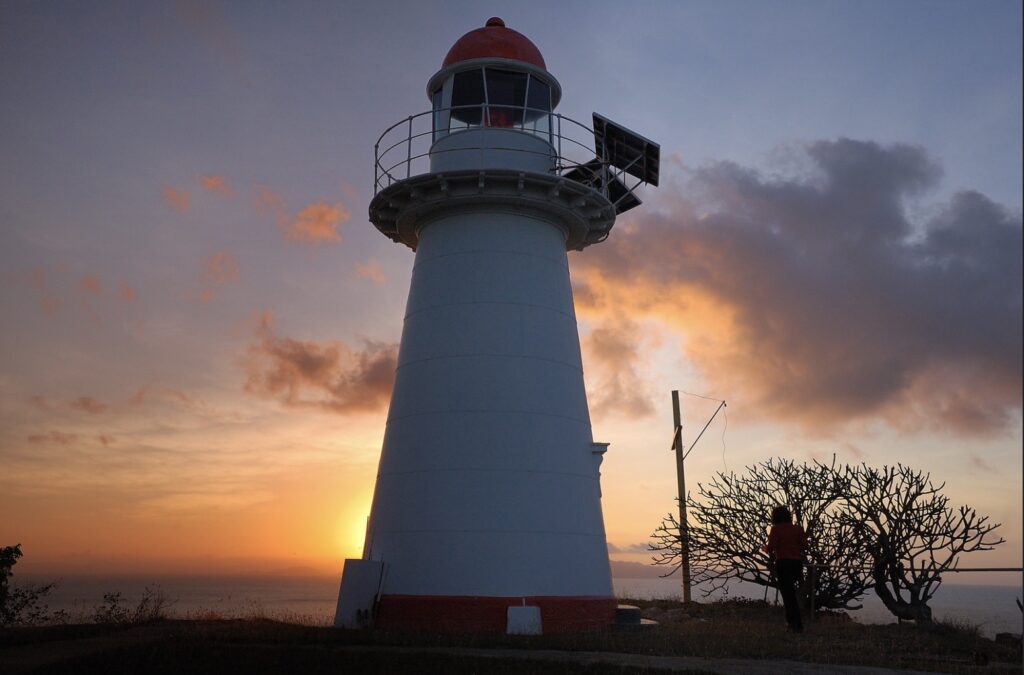

There is no doubt that Cape Cleveland served, and continues to serve, and important role in the safe passage of coastal shipping and boating in general. The same cannot be said for several other lighthouses that use to form a part of the shipping route linking the major towns in far north Queensland, Cairns, Townsville and Mackay.
Bay Rock Light (Original statistics):
20km north east of Townsville, Far North Queensland
GPS: Lat: 19° 06′ 60″ S : Long: 146° 45’ 7″ E
First Exhibited: December 1886 (Automated 1920), Decommissioned 1980, Relocated 1992
Tower height: 26′ (8m). Focal height: 95′ (29m) msl
Original Lens: 4th Order Chance Bros. Dioptric
Markings: White Tower, Red Lantern
Characteristic: Two white flashes every eight seconds: [Fl.(2)W. 8s]
Bay Rock was completed in 1866 and was one of the first 4 or 5 commissioned in Queensland. It was built primarily to help guide ships to the quarantine station established at West Point on Magnetic Island. This station was badly damaged by a cyclone in 1896 and again in 1903 after which a decision was taken to relocate it to Pallarenda near Townsville on the mainland. This process took over ten years and once completed by early 1914 the importance of the Bay Rock lighthouse diminished but the lighthouse still played an important role in guiding ship into Cleveland Bay or to a main anchorage off Bay Rock.

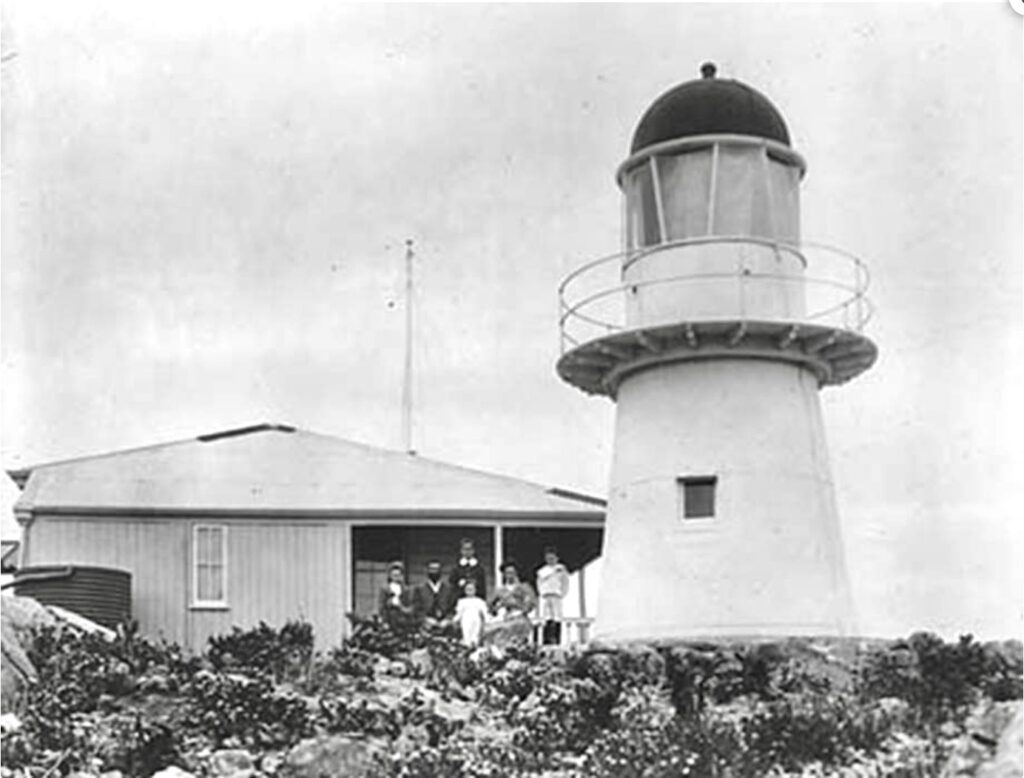
The lighthouse was originally manned and a small cottage accommodated the keeper and his family but a tragedy in 1920 led to the decision to automate it later that same year.
The lighthouse was deactivated in 1980 and relocated to the Townsville Maritime Museum in 1992 where it was refurbished by volunteers and officially opened to the public in 2003.
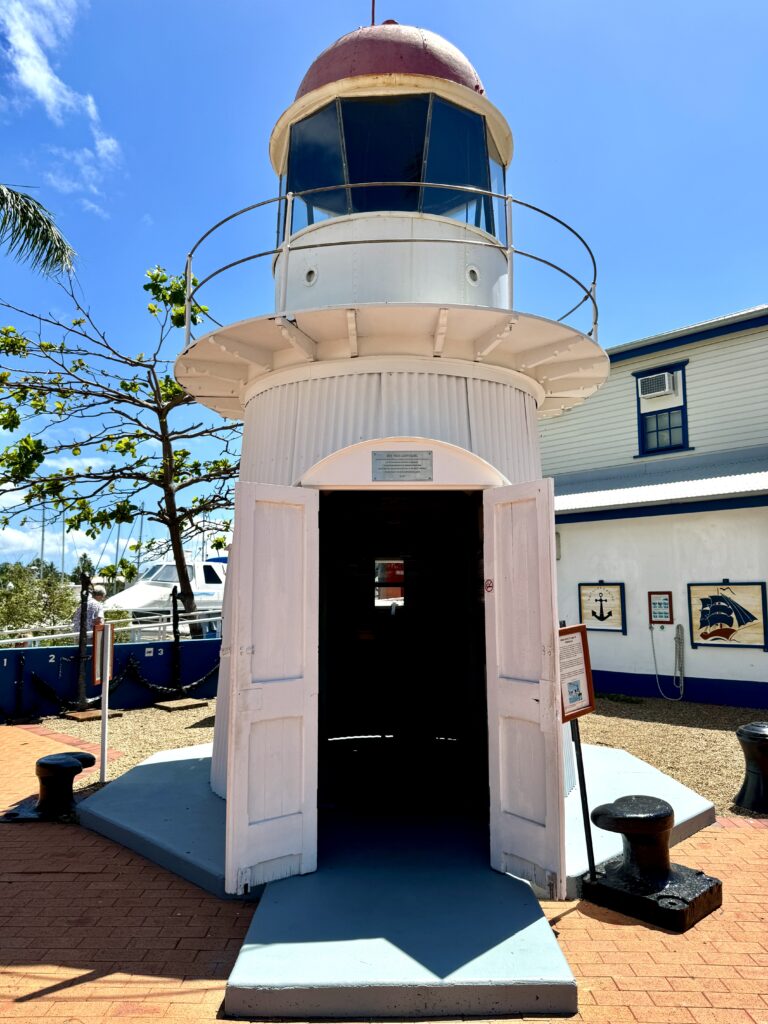
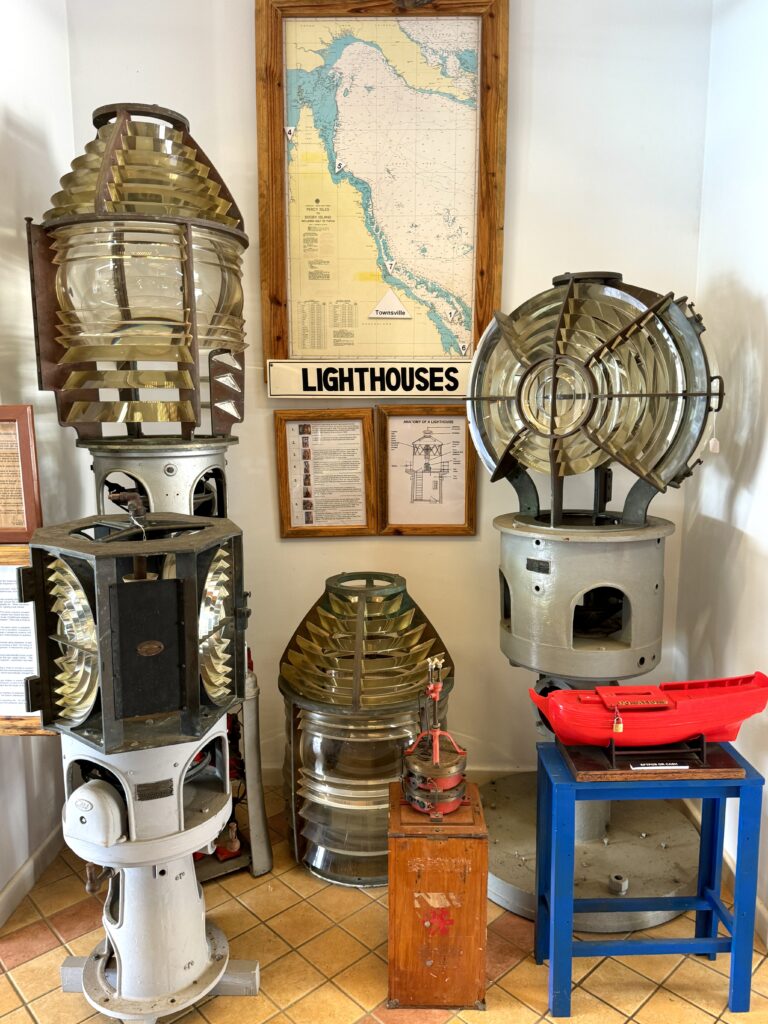

Notable Keepers and Visitors:
Captain William “Billy” Gordon was appointed keeper at Bay Rock in 1887 and lived there with his wife and two daughters but had a history of “mental abberation”. On 22nd April, 1902 his wife reported him as missing, he was never found but his trousers were found folded on a rock suggestion he comitted suicide by drowning himself. A replacement for Captain Gordon was not sent to Bay Rock for many years after his demise , in the meantime his wife and daughters undertook the lighthouse keeper duties.
A later keeper at Bay Rock was John Lawson who arrived in Australia from Scotland in 1909 and joined the RAN serving as an officer on the HMAS Sydney surviving it’s sinking in the Indian Ocean in 1914. He also served with the Australian Army in New Guinea before returning to Australia and marrying Jeanie Gibson in Brisbane.
Following the war Lawson took up lighthouse keeping and in August 1919 he and Jeanie with their four children (that was fast work) arrived on Bay Rock to take up duty and residence. Sadly this came to a tragic end in 1920 (see below).
Myths and Mysteries:
On the morning of Monday 8th March, 1920 John Lawson and his two assistant leave Bay Rock in the skiff Rialto to go to Townsville for a medical appointment. While they are ashore a squall of hurricane force blows in and they recruit another three service men to assist with the row back to the island. At around 6.30pm the Rialto capsizes about 6km from Bay Rock, Jeanie witnesses this through a telescope.
Lawson, instructs the three strongest swimmers, Barrie, Burgess and Wells to swim to Bay Rock to raise the alarm and send rescue craft. During the swim Burgess is attacked by a shark and severely injured but they manage to ward off the shark and make it to Bay Rock. Jeanie treats Burgess’s wounds and Barrie, Wells and the young Jack Lawson launch the dinghy and head out to rescue the other three men. No trace can be found of them and the next day an extensive search by a number of boats from Townsville discovers the upturned Rialto but no sign of the men. The search continues for another three days but no sign of the men is found and their fate remains unknown.
Shortly after his presumed death Jeanie gives birth to their fifth child. Jeanie and her family moved to the mainland and despite the fact they received no compensation for John’s death on duty the local Townsville community raised enough money for Jeanie to purchase a house and she and the children stayed in the area until her death in 1949.


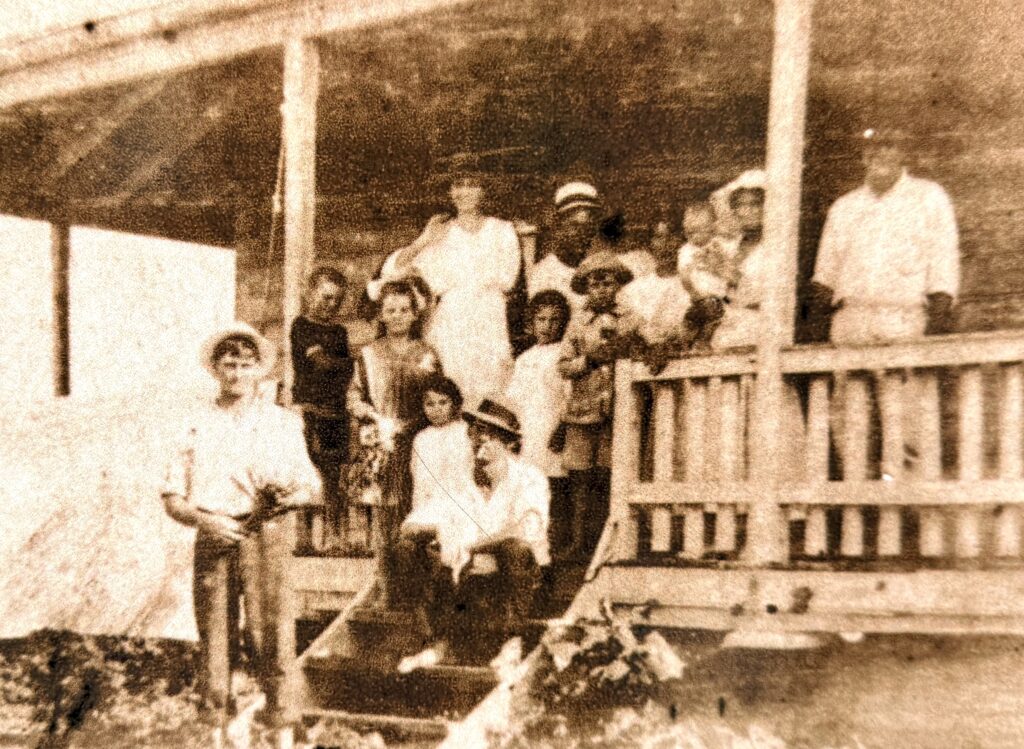
at Bay Rock
Current Status:
Cape Cleveland is operated by the Australian Maritime Safety Authority (AMSA) but like other lighthouses in Queensland AMSA transferred the title to Queensland Parks and Wildlife Service and was listed on the Queensland Heritage register in November 1998. Bay Rock is not classified but remains the property of the Maritime Museum.